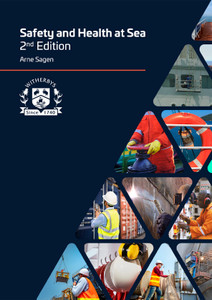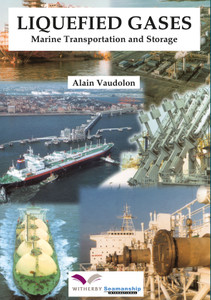
This book examines fire hazard management in the liquefied gas shipping and terminal industry, with reference to large refrigerated and smaller pressurised storage terminals, ships, cylinder filling plant and road and rail tanker loading racks. It is aimed at operational staff involved in handling flammable liquefied gas, as well as fire officers and other emergency planners who have liquefied gas installations in their jurisdiction.
This book provides an insight into the design and operation of liquefied gas installations and the equipment that is essential to their safe and efficient functioning. It describes the properties of flammable liquids and gases and explains how they should be stored and transported. It considers how the risk of combustion can be reduced to an acceptable level and examines the lessons learnt from relevant incidents.
Fire hazard management and emergency response strategies are covered in depth, from the contingency planning stage to fire prevention and detection, firefighting media and procedures, personal protective equipment (PPE) and maintenance of critical systems. The book also lists relevant codes, standards and guidelines in use throughout the world.
All the liquefied hydrocarbon gases are highly flammable. In the case of the ‘fuel’ gases, such as methane, propane and butane, flammability is the property that establishes them as a major energy source. However, their combustibility makes them inherently hazardous and precautions must be taken to reduce this hazard to acceptable levels by preventing inadvertent releases of vapour or liquid, reducing the possibility of subsequent ignition of flammable vapour and minimising the consequences of any fire that may occur.
Liquefied Gas Fire Hazard Management brings together, in a single volume, the principles of liquefied gas fire prevention and firefighting. It covers a broad spectrum of the liquefied gas industry, including large refrigerated and smaller pressurised storage terminals, ships, cylinder filling plant and road and rail tanker loading racks.
The book has been compiled for operational staff, such as plant supervisors and ships’ officers, who are involved in the handling of flammable liquefied gases. It will also be of benefit to fire officers and emergency planners who have liquefied gas installations within their jurisdiction, or experience regular road or rail car traffic involving these products in their area. This publication has been compiled to provide readers with an insight into the design and operation of liquefied gas installations and the equipment essential for the safe and efficient functioning of such installations.
Although the book is not intended to give prescriptive guidance to designers of liquefied gas installations, the content should provide considerable background information, not least through the case histories of well-known liquefied gas incidents and also through the bibliography. The book also considers many of the most commonly encountered codes, standards and guidelines in use throughout the world and the differences between the prescriptive and risk-based approaches to the drafting of these documents. These are given only as examples and it should also be noted that many countries have guidelines and national standards that are mandatory. Typical practices based on some of these are to be found in Sections 3 and 4. This latter information provides guidance on industry self-regulation for countries where no legislation exists.
An overview is given of the properties of the flammable liquefied gases most commonly encountered and the chemistry of combustion associated with these products. The means of storing and transporting liquefied gases either under pressure, in a refrigerated state, or using a combination of both, is also explained, along with the reasons for using the different techniques and the possible hazards associated with each of them.
Emergency response strategies are covered in depth, from contingency planning through to firefighting media and procedures for fighting liquefied gas fires. Also covered is the personal protective equipment necessary to protect responders from the effects of smoke, heat and gas.
Ignition prevention measures are discussed, including electrical zoning and the basic differences in ship and shore systems. Guidance is also given on the permit-to-work system, which is now almost universally accepted as being a major contributory factor in risk reduction.
Most regulatory regimes, whether prescriptive or risk-based, require ship or installation operators to demonstrate that their staff is adequately trained. Guidance is given on the training requirements for terminal staff and also the necessity for joint exercises with local fire brigades, emergency planning departments and harbour authorities. Suggestions are also given for the training of shipboard personnel in firefighting under the International Maritime Organization’s (IMO) Standards of Training Certification and Watchkeeping (STCW) Convention.
System failures can jeopardise the safety and integrity of the plant or ship and put lives at risk. As such, the book places considerable emphasis on the importance of the commissioning, testing and maintenance of critical systems such as fire and gas detection equipment.
The book concludes with a selection of case histories of liquefied gas incidents. These have been selected to cover all facets of the liquefied gas industry, including LNG, LPG, ships and terminals. Each of the eight case histories demonstrates either the lessons to be learned from an actual incident or what can be achieved by informed and trained responders.
Chapter 1 – Characteristics and Hazards of Liquefied Gases
1.1 Introduction
1.2 Liquefied Natural Gas (LNG)
1.3 Liquefied Petroleum Gas (LPG)
1.4 Chemical, Gases and Unsaturated Hydrocarbons
1.5 Combustion Characteristics of Gases
1.6 Thermal Radiation
Chapter 2 – Liquefied Gas Installations
2.1 General Considerations
2.2 Pressurised Storage
2.3 Semi-pressurised Storage
2.4 Refrigerated Storage
2.5 Gas Detection Systems
2.6 Relief Valves
2.7 Fire Protection
2.8 Leakage of Liquefied Gas not Ignited
2.9 Ignited Leakage of Liquefied Gas
2.10 Burn Down
2.11 Vessels and Storage Tanks Threatened by Fire
2.12 Boiling Liquid Expanding Vapour Fire Explosions (BLEVE)
2.13 Inspection of Pipework, Bellows and Relief Valves
2.14 Cylinder Filling (Bottling) Plants
2.15 Road and Rail Loading and Unloading Racks
2.16 Terminal Jetties
Chapter 3 – Liquefied Gas Ships
3.1 Introduction
3.2 Fully Refrigerated LPG Carriers
3.3 Semi-pressurised LPG/Chemical Gas Carriers
3.4 Fully Pressurised Liquefied Gas Carriers
3.5 LNG Carriers
3.6 Ship Design and Equipment
3.7 Fire and Safety Systems
3.8 Emergency Shut Down Systems
3.9 Cargo Tank Relief Valves and Vent Systems
3.10 ‘Gas safe’ and ‘Gas Dangerous’ Zones and Spaces
3.11 Gas Detections Systems
Chapter 4 – Principles of Fire Hazard Management
4.1 Risk Based Versus Prescriptive Standards
4.2 Hazard Management Planning – Five Basic Steps
4.3 General Considerations
4.4 Scenario Worksheets and Risk Assessment Tools
4.5 Ancillary Fire Risks
4.6 Domino Effects
Chapter 5 – Prevention of Fires and Explosions
5.1 Control of Ignition Sources
5.2 Area Classification
5.3 Ship/Shore and Terminal/Road Tanker Interfaces
5.4 Prevention of Fires in Liquefied Gas Containment Systems
5.5 Security and Visitors
5.6 Permit to Work Systems
Chapter 6 – The Principles of Fire and Gas Detection
6.1 Detection of Leakage
6.2 Applicability of Gas Detection Equipment
6.3 General Design Guidance for Gas Detection Equipment
6.4 Fire Detection
6.5 Applicability of Fire Detection Systems
6.6 Capabilities and Limitations of Fire Detection Systems
6.7 General Design Guidance for Fire Detection Systems
Chapter 7 – Fire and Explosion Mitigation
7.1 Passive Fire Protection
7.2 Containment and Spill Control
7.3 Fire Water Systems
7.4 Water Deluge Spray and Sprinkler Systems
7.5 Water Monitor Systems
7.6 Foam Systems
7.7 Dry Chemical Systems
7.8 Water Mist Systems
7.9 Gas Dispersion with Water Spray
7.10 Portable Firefighting Equipment
7.11 Firefighting (F1 F1) Tugs
Chapter 8 – Emergency Response Strategies
8.1 Emergency Procedures and Local Response Plans
8.2 Evacuation Plans
8.3 Tanker Emergency Plans
8.4 Emergency Transfer Equipment for Road Tankers
8.5 Incident Response Strategies
8.6 Personal Protective Equipment (PPE) for Responders
8.7 Scenario-Specific Emergency Response Plans (ERPS)
8.8 Fire, Explosion and Gas Dispersion Modelling
Chapter 9 – Training for Emergency Responders
9.1 Competency Requirements
9.2 Liaison with Fire Service/Port Authority/Tug Boat Owners
9.3 Exercises and Drills
Chapter 10 – Maintenance of Critical Systems
10.1 Introduction
10.2 Applicability
10.3 Inspection and Testing of Fire Systems
10.4 Commissioning Fire Systems
10.5 System Maintenance
10.6 Emergency Response Testing
10.7 Audits
Chapter 11 – Liquefied Gas Incidents
Incident No 1: Attack on ‘Gaz Fountain’
Incident No 2: Cleveland LNG Tank Failure
Incident No 3: ‘Val Rosandra’ Propylene Fire
Incident No 4: Refrigerated LPG Storage Tank Fire
Incident No 5: Feyzin Pressurised Storage Tanks Fire
Incident No 6: Mexico City LPG Distribution Depot Fire
Incident No 7: Pajaritos Port LPG Transfer Fire
Incident No 8: ‘Sunrise’ Pressurised LPG Flaring
SIGTTO
The Society of International Gas Tanker and Terminal Operators (SIGTTO) is an international body established for the exchange of technical information and experience, between members of the industry, to enhance the safety and operational reliability of gas tankers and terminals.
https://www.sigtto.org/about-us/
RPI
Resource Protection International (RPI) is an independent fire hazard management consultancy serving the oil, gas and petrochemical industries. The company has extensive international experience in all aspects of fire hazard management from conceptual studies to implementation.
- Number of Pages:
- 198
- ISBN:
- 9781856092654
- Published Date:
- July 2004
- Binding Format:
- Hardback
- Book Height:
- 300 mm
- Book Width:
- 215 mm
- Weight:
- 1.4 kg
- Preview:
- Yes
- Physical:
- (In Stock)
 Witherbys.com
Witherbys.com





